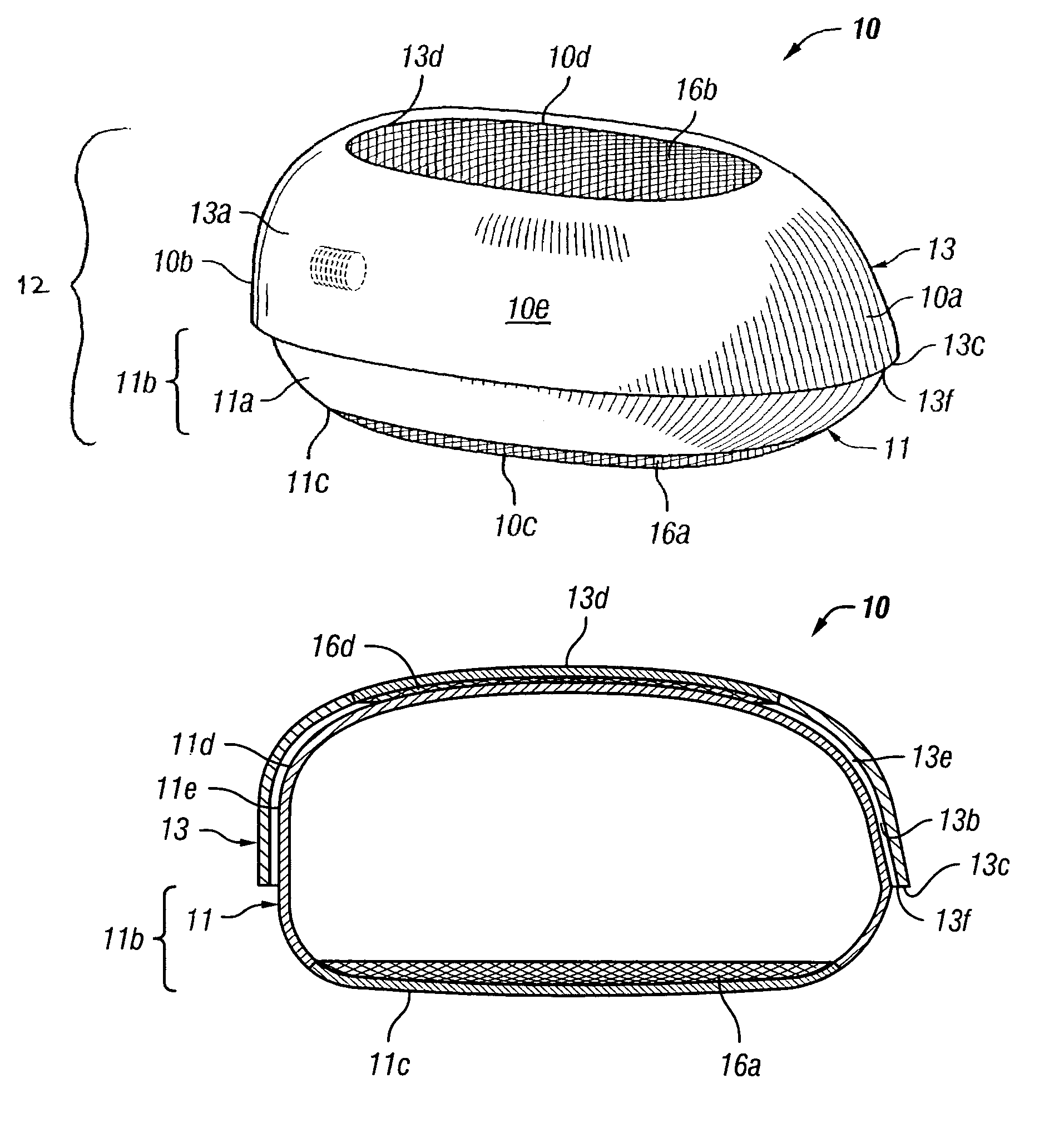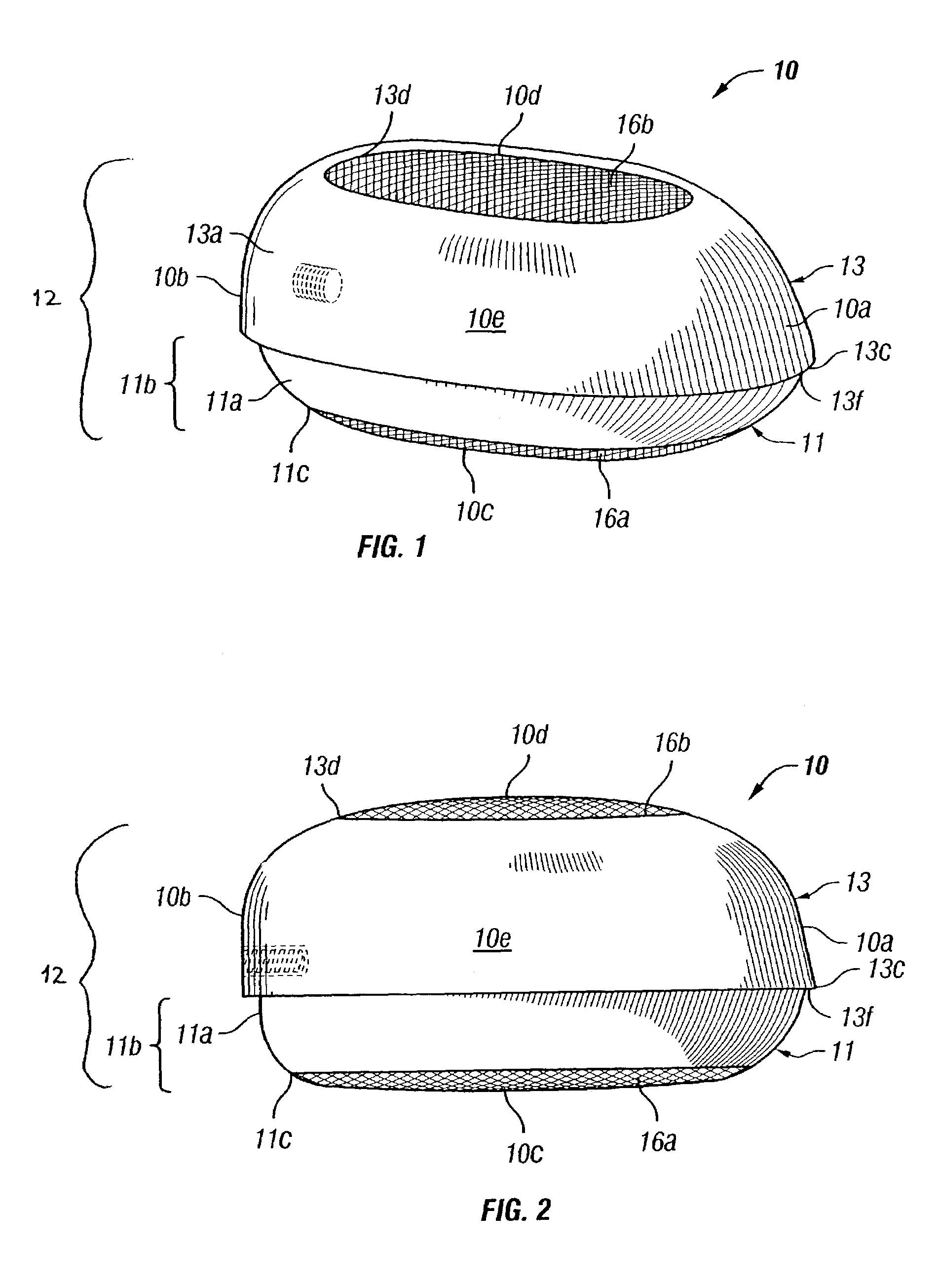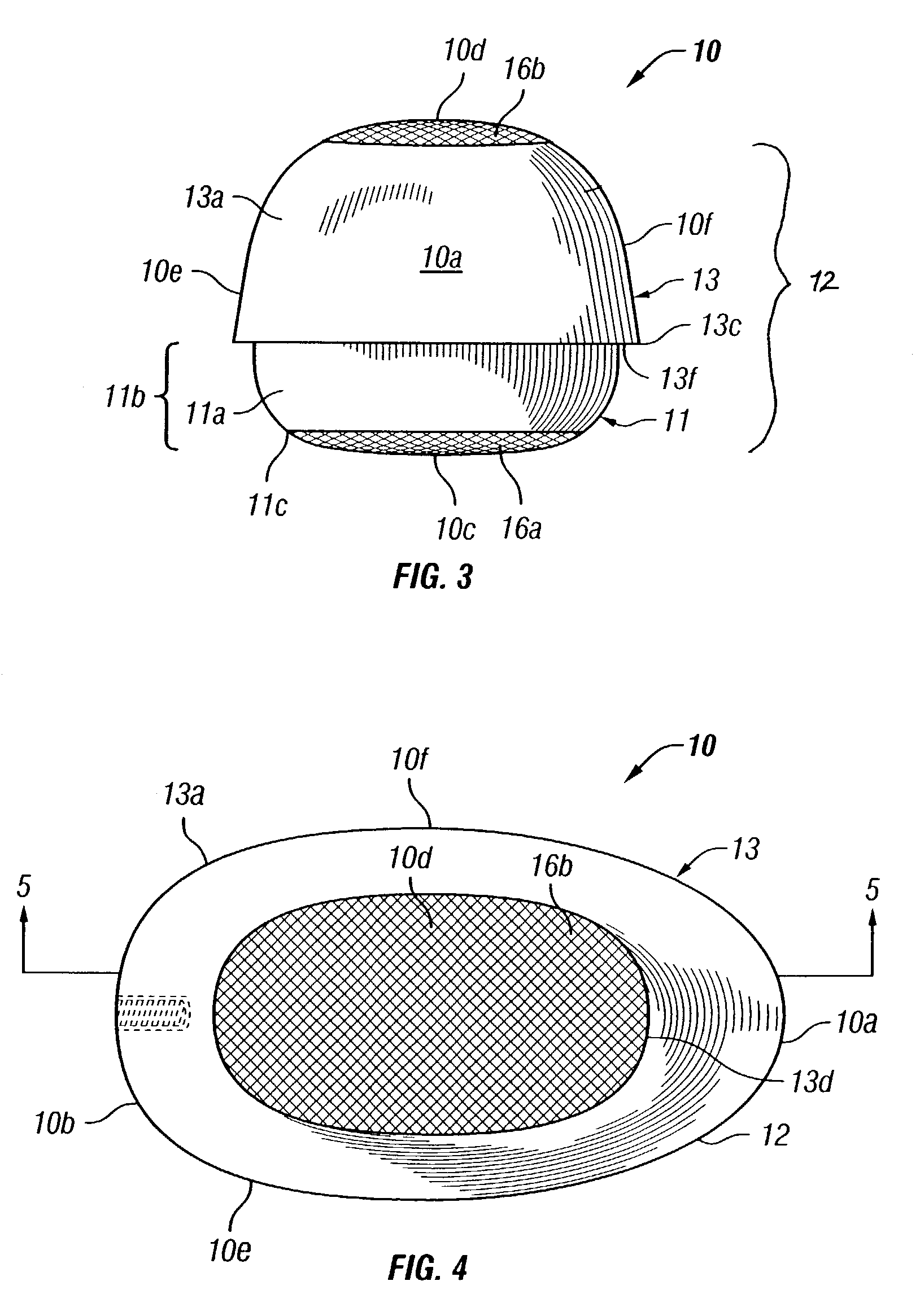Intervertebral disk prosthesis
a technology for intervertebral disks and prostheses, which is applied in the field of intervertebral disk prosthesis, can solve the problems of reducing the intrinsic support strength and stability of the disc, affecting the function of the disc, and unable to reverse the damage to the nerve tissu
- Summary
- Abstract
- Description
- Claims
- Application Information
AI Technical Summary
Benefits of technology
Problems solved by technology
Method used
Image
Examples
Embodiment Construction
[0043]Certain terminology is used in the following description for convenience only and is not limiting. The words “right”, “left”, “lower”, and “upper” designate directions in the drawing to which reference is made. The words “inwardly” and “outwardly” refer direction toward and away from, respectively, the geometric center of the disk prosthesis and designated parts thereof. The terminology includes the words above specifically mentioned, derivatives thereof and words of similar import. Additionally, the word “a”, as used in the claims and in the corresponding portions of the specification, means “at least one.”
[0044]Referring to the drawings in detail, wherein like reference numerals indicate like elements throughout, there is shown in FIG. 1 an artificial disk or disk prosthesis 10 having a distal end 10a, a proximal end 10b, a lower wall 10c, an upper wall 10d, a first sidewall 10e and a second sidewall 10f (FIGS. 3, 4). The disk prosthesis 10 includes a first part or a cap 13....
PUM
| Property | Measurement | Unit |
|---|---|---|
| length | aaaaa | aaaaa |
| length | aaaaa | aaaaa |
| width | aaaaa | aaaaa |
Abstract
Description
Claims
Application Information
 Login to View More
Login to View More - R&D
- Intellectual Property
- Life Sciences
- Materials
- Tech Scout
- Unparalleled Data Quality
- Higher Quality Content
- 60% Fewer Hallucinations
Browse by: Latest US Patents, China's latest patents, Technical Efficacy Thesaurus, Application Domain, Technology Topic, Popular Technical Reports.
© 2025 PatSnap. All rights reserved.Legal|Privacy policy|Modern Slavery Act Transparency Statement|Sitemap|About US| Contact US: help@patsnap.com



